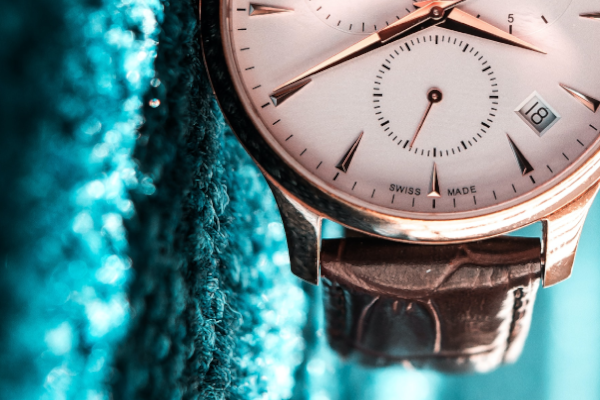We wash our hands, clean our clothes and sanitize our surfaces – but how many of us regularly clean our jewelry? Most people don't even think about it since jewelry isn't seen as something that can transfer germs. But the truth is that germs are tenacious and crafty – they can hitch a ride on just about anything.
This is why it's so important to clean and disinfect your jewelry regularly. Doing so can not only help to reduce germs and viral transfers, it also keeps your jewelry looking newer for longer.
How Often Should You Disinfect Your Jewelry?
Some jewelry only comes out for special occasions while others are a part of our daily wardrobe. Pieces such as wedding rings, watches or other items you wear daily should be washed every week or every other week. Deeper cleanings can be done monthly and some pieces should be sent to a jeweler for a professional cleaning at least once a year.
The techniques and tips in this article will help you keep your jewelry in great condition and clean throughout the year. These techniques cover the most common items found in jewelry collections. For high-end pieces, or pieces with delicate parts (loose stones, vintage embellishments) or simply any piece you’re not comfortable cleaning yourself, we advise making an appointment for a professional cleaning and consultation. An experienced jeweler will not only be able to clean and disinfect these special pieces carefully, they will also be able to advise you on the next way to keep them looking good between cleanings.
Disinfecting Diamond and Gemstone Jewelry
Cleaning gemstone rings, pendants and other jewelry is an easy way to keep it looking its best. While these pieces can be an investment, cleaning them isn’t a pricey undertaking. In order to clean this type of jewelry you will only need warm water, liquid soap, a soft brush and a microfiber cloth.
In a bowl, mix some warm water with a very small amount of soap. You want an extremely weak mixture in order to avoid leaving any film or residue on your jewelry. Using a soft toothbrush, gently clean the entire piece. Have a separate bowl of clean, warm water in order to quickly rinse each piece before patting it dry with the microfiber cloth.

Cleaning Luxury Watches
If your watch is waterproof or water-resistant, check to see if there is anything you need to do to properly seal it. Rolex, for example, gives the following advice to seal their watches before cleaning. “The crown of your Rolex screws down tightly to create a hermetic seal like the hatch of a submarine.”
Once the watch is sealed, simply clean in the same manner used on diamond and gemstone pieces as described above. If your watch is not watertight, lay it flat on your microfiber cloth and dip the brush into your soapy mixture, brush clean and then pat dry right away. Do not, however, use that mix on or near the face of the watch. Instead, use alcohol cleaning pads or a cotton swab dipped in rubbing alcohol to clean the entire face and around the edges.
Cleaning Silver Jewelry - The Old Ways Aren’t Always Best
So far, the techniques used for cleaning jewelry that we have outlined have been used for generations. After all, simple and time tested options are often best, especially for those who like to do things for themselves.
While soap and water is a Go To for nearly any job, when it comes to silver, things can get tricky. Silver can tarnish easily and while a quick wipe down with soap and water can help keep it clean, that won’t get it to shine up or tackle any issues with tarnishing.
For a long time, people relied on a mix of hot water with baking soda or salt in a bowl lined with aluminum foil. While this method can provide dramatic results, it is incredibly abrasive and can hurt silver over time.
These days, there are a number of specially formulated silver wipes and creams. Specialist cleaning lines from companies such as Weiman and Wright’s are easily available online or through local jewellery stores.
Cleaning Organic Gemstones: Opals, Pearls, and Turquoise
Gemstones such as pearls and opals are somewhat porous and can be easily affected if exposed to chemicals or harsh cleaning agents.The use of alcohol or hand sanitizer, for example, can dull the color and even cause splits in some cases.
These kinds of gemstones should be wiped clean with a barely damp towel and then dried immediately with a microfiber cloth to avoid scratching the stone’s surface. Stones such as these should never be submerged, even for rinsing, as long exposure to water can ruin their looks.
Moisture Free Options for Disinfecting Jewellery
If you want a truly water free option to get your jewelry clean and sanitized, there are a number of at home machines available. These machines use UV Light to kill germs and bacteria and have become popular with many people for disinfecting everything from their watches and rings to their sunglasses and car keys.
While using these machines will certainly leave your pieces of jewelry or other accessories germ-free and sanitized, that doesn’t mean they deliver the same shine people have come to expect when cleaning their jewelry. For some, this isn’t an issue as their goal is simply to make the jewelry pieces as sanitized as possible. Others use these machines in conjunction with detailed cleaning techniques in order to get the result they want.
Making Jewelry Cleaning a Priority
There’s seeming no end to the number of things clamoring for our attention, time and energy these days. With so much competing for our attention, tasks like disinfecting your jewelry can easily fall by the wayside.
Taking the time and devoting the energy to cleaning and caring for your jewelry isn’t something worth skimping on, though. In the end, cleaning and caring for your entire jewelry collection helps keep it looking good for longer, extends its life and prevents it from being the host to germs and bacteria. In the end, it’s about keep your jewelry - and yourself - in tip top shape.



